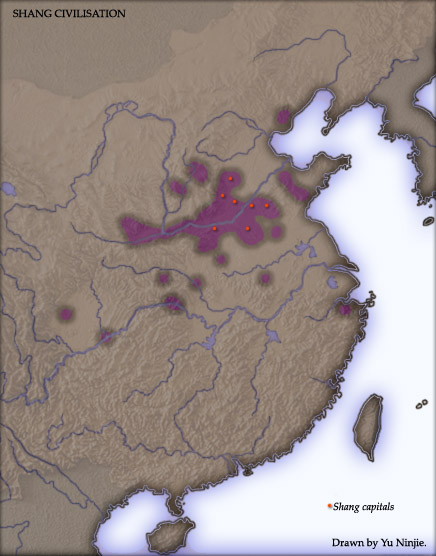தொடர்புடைய கட்டுரை
Shang dynasty
24th Nov 2017

Archaeological findings providing evidence for the existence of the Shang dynasty, c. 1600–1046 BC, are divided into two sets. The first set, from the earlier Shang period, comes from sources at Erligang, Zhengzhou, and Shangcheng. The second set, from the later Shang or Yin period, is at Anyang, in modern-day Henan, which has been confirmed as the last of the Shang's nine capitals (c. 1300–1046 BC). The findings at Anyang include the earliest written record of Chinese past so far discovered: inscriptions of divination records in ancient Chinese writing on the bones or shells of animals — the so-called "oracle bones", dating from around 1500 BC. 31 kings reigned over the Shang dynasty. During their reign, according to the Records of the Grand Historian, the capital city was moved six times. The final (and most important) move was to Yin in 1350 BC which led to the dynasty's golden age. The term Yin dynasty has been synonymous with the Shang dynasty in history, although it has lately been used to refer specifically to the latter half of the Shang dynasty. Chinese historians living in later periods were accustomed to the notion of one dynasty succeeding another, but the actual political situation in early China is known to have been much more complicated. Hence, as some scholars of China suggest, the Xia and the Shang can possibly refer to political entities that existed concurrently, just as the early Zhou is known to have existed at the same time as the Shang. Although written records found at Anyang confirm the existence of the Shang dynasty, Western scholars are often hesitant to associate settlements that are contemporaneous with the Anyang settlement with the Shang dynasty. For example, archaeological findings at Sanxingdui suggest a technologically advanced civilization culturally unlike Anyang. The evidence is inconclusive in proving how far the Shang realm extended from Anyang. The leading hypothesis is that Anyang, ruled by the same Shang in the official history, coexisted and traded with numerous other culturally diverse settlements in the area that is now referred to as China proper.